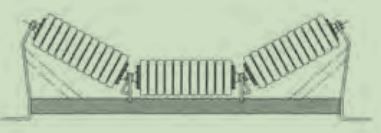 Afrikaans
Afrikaans  Albanian
Albanian  Amharic
Amharic  Arabic
Arabic  Armenian
Armenian  Azerbaijani
Azerbaijani  Basque
Basque  Belarusian
Belarusian  Bengali
Bengali  Bosnian
Bosnian  Bulgarian
Bulgarian  Catalan
Catalan  Cebuano
Cebuano  Corsican
Corsican  Croatian
Croatian  Czech
Czech  Danish
Danish  Dutch
Dutch  English
English  Esperanto
Esperanto  Estonian
Estonian  Finnish
Finnish  French
French  Frisian
Frisian  Galician
Galician  Georgian
Georgian  German
German  Greek
Greek  Gujarati
Gujarati  Haitian Creole
Haitian Creole  hausa
hausa  hawaiian
hawaiian  Hebrew
Hebrew  Hindi
Hindi  Miao
Miao  Hungarian
Hungarian  Icelandic
Icelandic  igbo
igbo  Indonesian
Indonesian  irish
irish  Italian
Italian  Japanese
Japanese  Javanese
Javanese  Kannada
Kannada  kazakh
kazakh  Khmer
Khmer  Rwandese
Rwandese  Korean
Korean  Kurdish
Kurdish  Kyrgyz
Kyrgyz  Lao
Lao  Latin
Latin  Latvian
Latvian  Lithuanian
Lithuanian  Luxembourgish
Luxembourgish  Macedonian
Macedonian  Malgashi
Malgashi  Malay
Malay  Malayalam
Malayalam  Maltese
Maltese  Maori
Maori  Marathi
Marathi  Mongolian
Mongolian  Myanmar
Myanmar  Nepali
Nepali  Norwegian
Norwegian  Norwegian
Norwegian  Occitan
Occitan  Pashto
Pashto  Persian
Persian  Polish
Polish  Portuguese
Portuguese  Punjabi
Punjabi  Romanian
Romanian  Russian
Russian  Samoan
Samoan  Scottish Gaelic
Scottish Gaelic  Serbian
Serbian  Sesotho
Sesotho  Shona
Shona  Sindhi
Sindhi  Sinhala
Sinhala  Slovak
Slovak  Slovenian
Slovenian  Somali
Somali  Spanish
Spanish  Sundanese
Sundanese  Swahili
Swahili  Swedish
Swedish  Tagalog
Tagalog  Tajik
Tajik  Tamil
Tamil  Tatar
Tatar  Telugu
Telugu  Thai
Thai  Turkish
Turkish  Turkmen
Turkmen  Ukrainian
Ukrainian  Urdu
Urdu  Uighur
Uighur  Uzbek
Uzbek  Vietnamese
Vietnamese  Welsh
Welsh  Bantu
Bantu  Yiddish
Yiddish  Yoruba
Yoruba  Zulu
Zulu types of conveyor belt rollers
Understanding the Types of Conveyor Belt Rollers
Conveyor belt systems are crucial for a variety of industries, facilitating the efficient movement of goods and materials. A vital component of these systems is the conveyor belt roller, which plays a significant role in supporting the belt and facilitating smooth operation. Understanding the types of conveyor belt rollers can help in selecting the right components for specific applications, ultimately enhancing efficiency and productivity.
1. Idler Rollers
Idler rollers are stationary rollers that support the weight of the conveyor belt and its load. They are essential for maintaining the tension and alignment of the belt. Idler rollers can be categorized into several types
- Flat Idlers These are used to provide a flat surface for the belt to travel on. They are the most common type and are essential for straightforward, level transport. - Crowned Idlers These rollers have a slight crown or curve along their width, which helps keep the belt centered. This feature reduces the risk of the belt drifting off the sides, ensuring a smooth operation.
- Roller Return Idlers These are positioned on the return side of the conveyor belt. They are crucial for supporting the belt as it returns to the loading area, preventing sagging and potential damage.
2. Drive Rollers
Drive rollers are powered rollers that move the conveyor belt. They play a significant role in the functionality of the entire conveyor system. There are various types of drive rollers, including
- Electric Drive Rollers Equipped with an internal motor, these rollers are compact and minimize the need for external drives and pulleys. They are efficient and often used in modern conveyor systems.
types of conveyor belt rollers

- Friction Drive Rollers These rollers rely on friction to turn the conveyor belt. They are commonly used in installations where precision in speed control is not critical.
3. Guided Rollers
Guided rollers are specialized rollers that help keep the conveyor belt aligned, particularly in curved sections. They ensure that the belt follows a specific path, which is critical in maintaining the overall efficiency of the conveyor system. These rollers are especially beneficial in confined spaces or where space constraints necessitate a change in direction.
4. Specialty Rollers
Certain applications may require specialty rollers designed for specific tasks. Examples include
- High-Temperature Rollers Used in environments with elevated temperatures, these rollers are made from materials that can withstand heat without deforming, ensuring reliable operation in challenging conditions.
- Corrosion-Resistant Rollers Ideal for environments exposed to moisture or corrosive substances, such as food processing or chemical industries, these rollers ensure longevity and durability.
Conclusion
Choosing the right type of conveyor belt roller is crucial for the efficiency and effectiveness of conveyor systems. By understanding the various types—idler rollers, drive rollers, guided rollers, and specialty rollers—engineers and operators can select the most appropriate components for their specific applications. This, in turn, leads to improved operational efficiency, reduced downtime, and enhanced productivity across various industries. Investing in the right conveyor belt rollers is a step towards ensuring a seamless material handling process that meets modern industrial demands.
-
Revolutionizing Conveyor Reliability with Advanced Rubber Lagging PulleysNewsJul.22,2025
-
Powering Precision and Durability with Expert Manufacturers of Conveyor ComponentsNewsJul.22,2025
-
Optimizing Conveyor Systems with Advanced Conveyor AccessoriesNewsJul.22,2025
-
Maximize Conveyor Efficiency with Quality Conveyor Idler PulleysNewsJul.22,2025
-
Future-Proof Your Conveyor System with High-Performance Polyurethane RollerNewsJul.22,2025
-
Driving Efficiency Forward with Quality Idlers and RollersNewsJul.22,2025





























